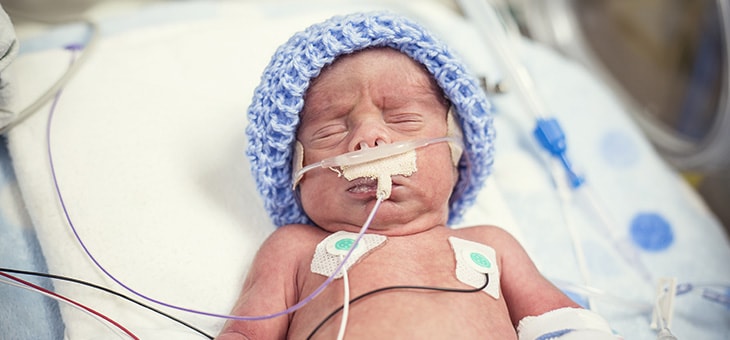Respiratory Distress Syndrome
Preterm infants are at increased risk of developing acute respiratory distress syndrome (RDS) within 6 hours of birth
The main cause of RDS is the underlying surfactant defect. In the case of preterm infants, they may not have enough surfactants because the lungs are underdeveloped. In the absence of surfactant, the lungs collapse. This can cause difficulty in breathing as the baby needs to try hard to raise the lungs. As the function of the lungs is affected, the tissues receive less oxygen. Rising carbon dioxide levels can lead to a condition called acidosis. It has negative effects on body organs.
Symptoms of Respiratory Distress Syndrome:
Children with Respiratory Distress Syndrome have the following symptoms:
- Increased respiratory rate (tachypnea)
- Increased work of respiration (chest insertion / withdrawal)
- Bluish cyanosis
- Sounds while breathing
- Inflammation in the nostrils
Symptoms appear immediately after birth and may worsen if not treated in time.
Diagnosis of Respiratory Distress Syndrome:
Several methods / tests are used to diagnose Respiratory Distress Syndrome:
- Physical examination, blue color of body parts, etc. to assess the severity of respiratory distress
- Pulse oximeter: This is a non-invasive device that measures the oxygen saturation levels in the blood.
- Arterial blood gas test (ABG): This is a specific blood test that measures the amount of oxygen and carbon dioxide in the blood. RDS severity can also be determined with this test
- X-ray: Chest X-ray plays a major role in diagnosing the presence of RDS and determining the severity of RDS.
Treatment of Respiratory Distress Syndrome:
All high-risk pregnancies (pregnancy in older women, or a pre-existing condition of diabetes or hypertension), are more likely to give birth prematurely. Under such circumstances, the health care provider may prescribe antenatal steroids to the mother before delivery. To increase the maturity of the fetal lung.
Preterm infants with RDS symptoms are transferred to the neonatal intensive care unit.
If the severity of RDS is low, nasal sprays are provided. However, if the severity is high, a CPAP or ventilator may be used to support the breathing process.
Intraoperative administration of the surfactant is also performed on infants with severe RDS with high oxygen requirements.